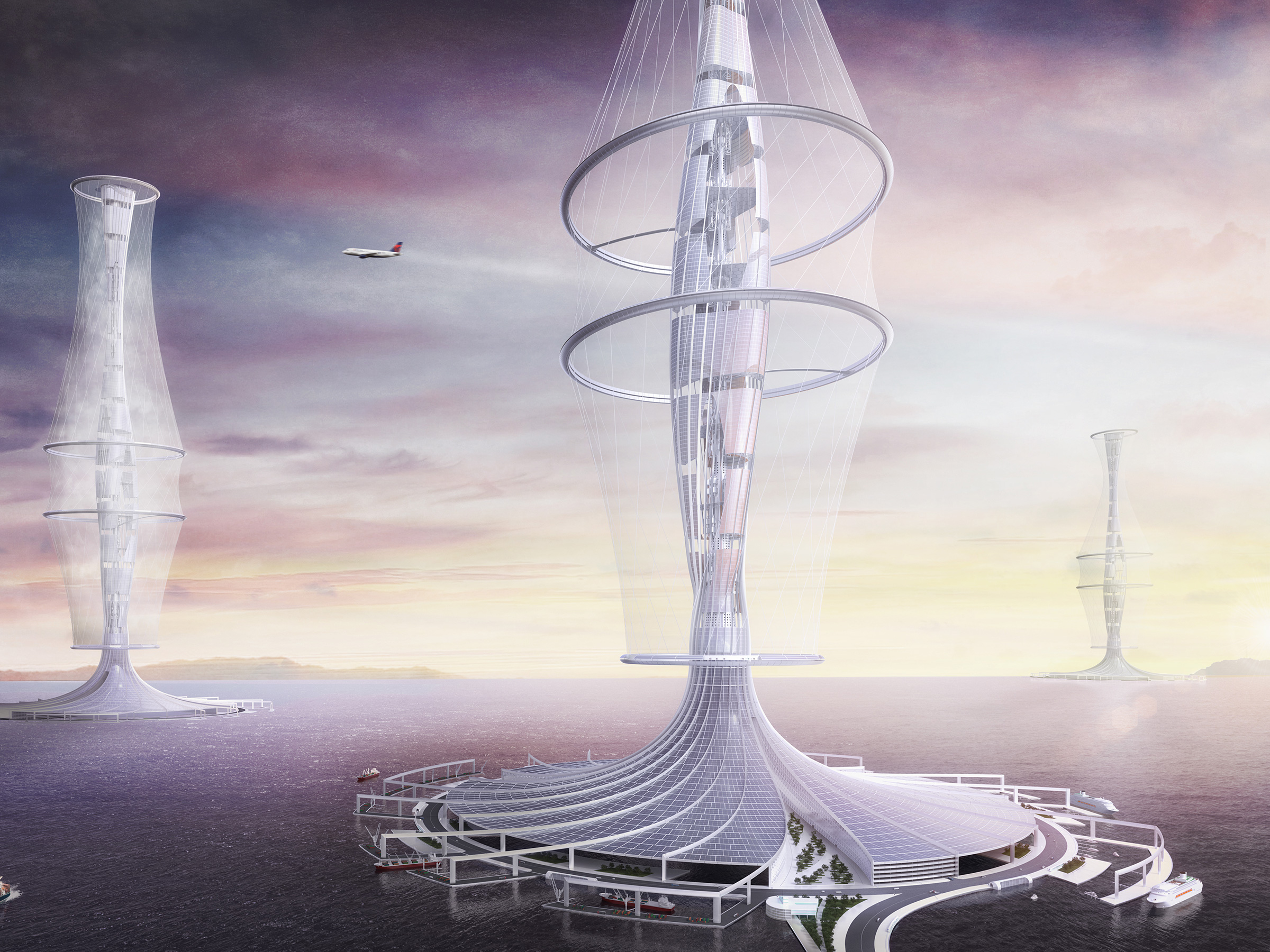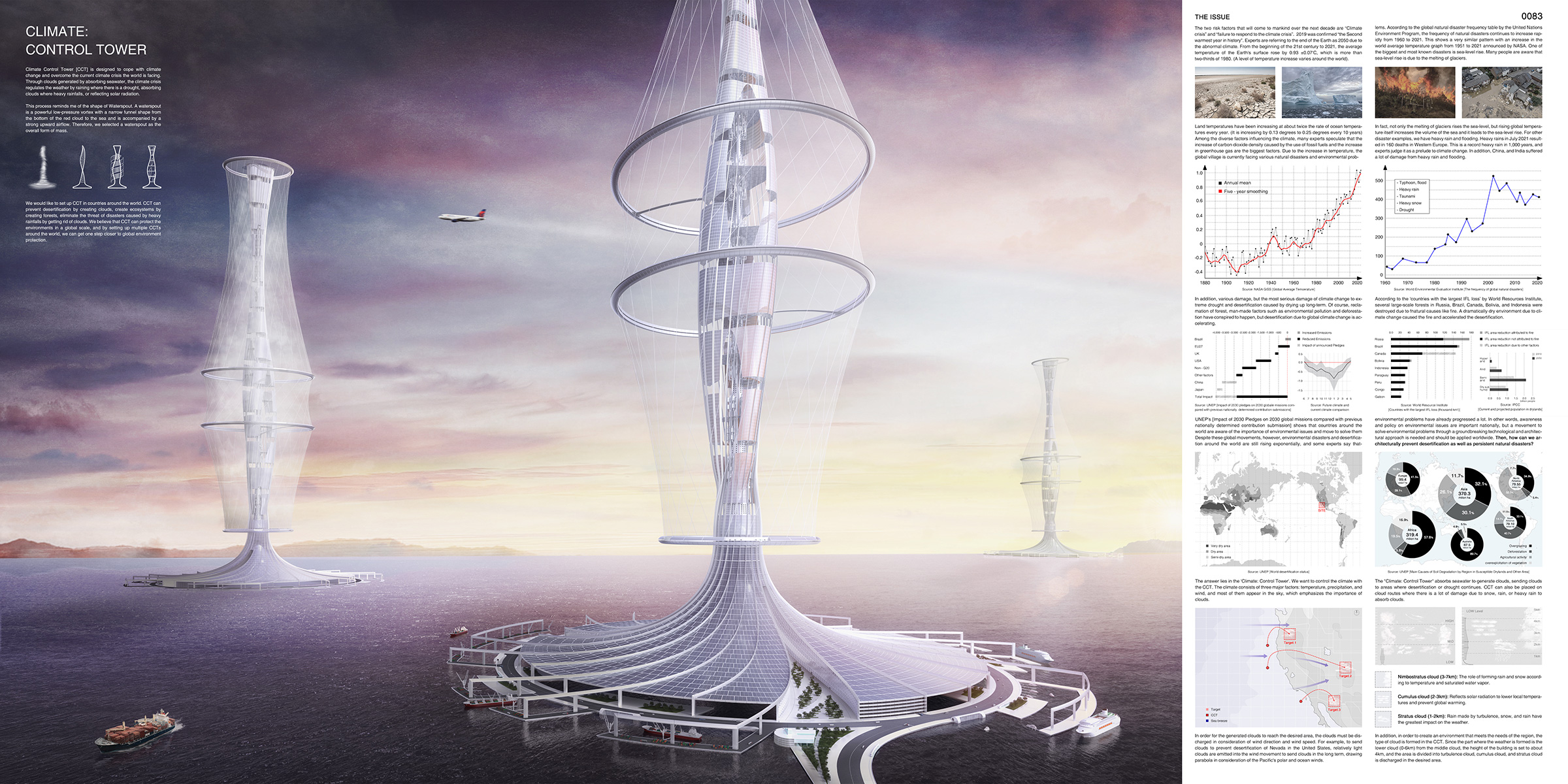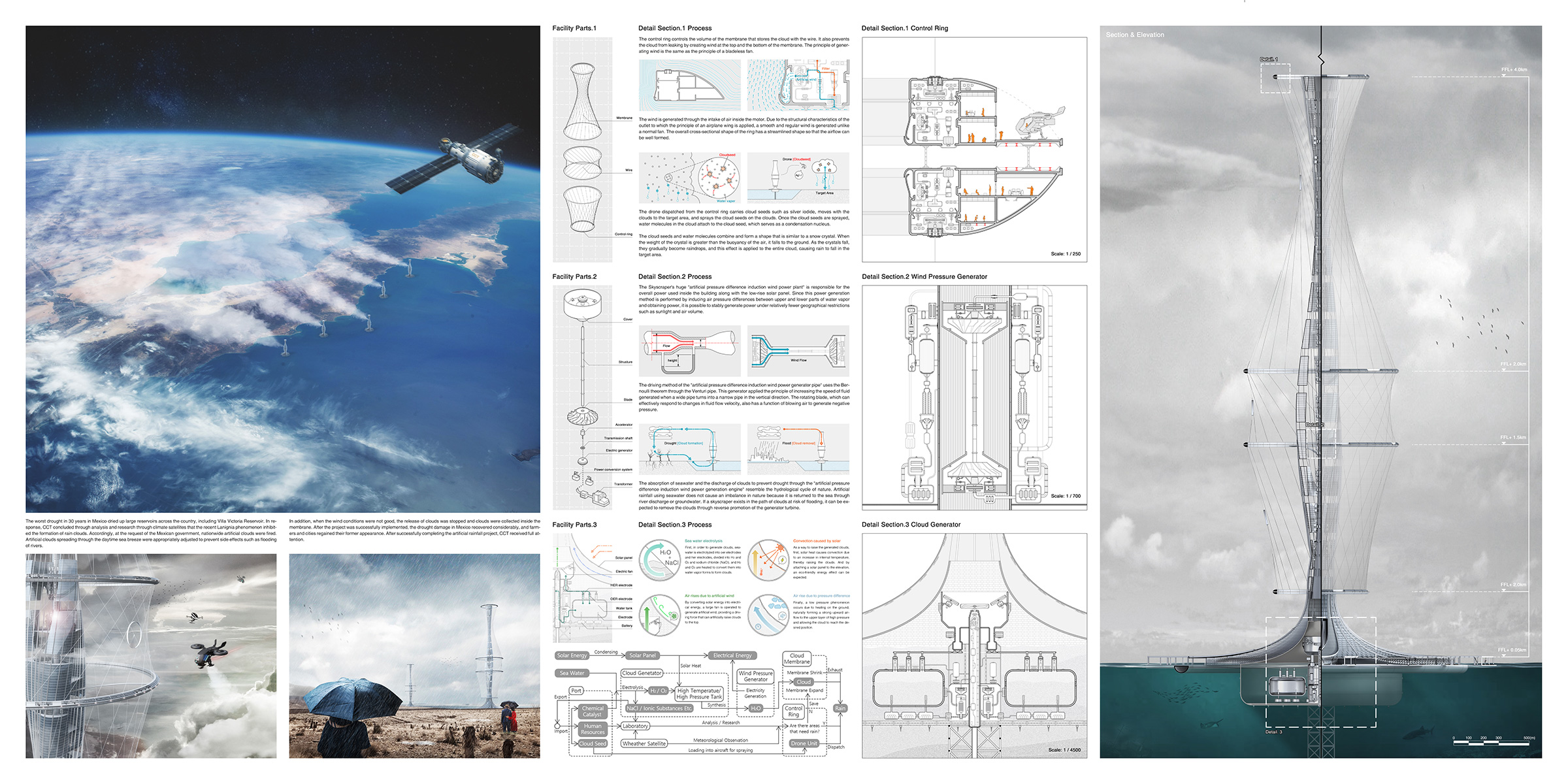Winners 2022 Skyscraper Competition

eVolo Magazine is pleased to announce the winners of the 2022 Skyscraper Competition. The Jury selected 3 winners and 20 honorable mentions from 427 projects received. The annual award established in 2006 recognizes visionary ideas that through the novel use of technology, materials, programs, aesthetics, and spatial organizations, challenge the way we understand vertical architecture and its relationship with the natural and built environments.
The FIRST PLACE was awarded to CLIMATE CONTROL SKYSCRAPER designed by Kim Gyeong Jeung, Min Yeong Gi, and Yu Sang Gu from South Korea. The project investigates the use of a series of skyscrapers to modify weather conditions that would improve the global climate crisis and stop desertification, rising temperatures, and natural disasters.
The recipients of the SECOND PLACE are Wang Jue, Zhang Qian, Zhang Changsheng, Li Muchun, and Xu Jing from China for the project TSUNAMI PARK. The project is designed as a man-made inhabited mangrove for the Tonga region to prevent tsunamis that would affect the Pacific Rim.
NEW SPRING: AGRO-ECOLOGICAL SKYSCRAPER designed by Michał Spólnik from Austria and Marcin Kitala from Poland received the THIRD PLACE. The proposal is envisioned as an aggregation of garden modules containing distinct flora and microorganisms that could be deployed to specific regions that would flourish with new life.
The Jury was formed by Volkan Alkanoglu [Principal, VA | DESIGN], Gianni Botsford [Principal, Gianni Botsford Architects], Steven Chilton [Principal, SCA | Steven Chilton Architects], Tsvetelina Georgieva [Principal, DesignMorphine], Nuru Karim [Principal, Nudes], Arthur Mamou-Mani [Principal, Mamou-Mani Architects], and Moon Hoon [Principal, Moon Hoon Architects]


BACKGROUND
The two risk factors that will come to mankind over the next decade are “Climate crisis” and “failure to respond to the climate crisis”. 2019 was confirmed as “the Second warmest year in history”. Experts are referring to the end of the Earth as 2050 due to the abnormal climate. From the beginning of the 21st century to 2021, the average temperature of the Earth’s surface rose by 0.93 ±0.07’C, which is more than two-thirds of 1980. (It is increasing by 0.13 degrees to 0.25 degrees every 10 years). Due to the increase in temperature, the global village is currently facing various natural disasters and environmental problems. There are various damages, the most serious damage of climate change to extreme drought and desertification caused by drying up long-term. Of course, reclamation of forests, and man-made factors such as environmental pollution and deforestation have conspired to happen, but desertification due to global climate change is accelerating. Despite these global movements, environmental disasters and desertification around the world are still rising exponentially, and some experts say that environmental problems have already progressed a lot. In other words, awareness and policy on environmental issues are important nationally, but a movement to solve environmental problems through a groundbreaking technological and architectural approach is needed and should be applied worldwide. Then, how can we architecturally prevent desertification as well as persistent natural disasters? The answer lies in the ‘Climate Control Tower’. CCT is designed to cope with climate change and overcome the current climate crisis the world is facing. Through clouds generated by absorbing seawater, the climate crisis regulates the weather by raining where there is a drought, absorbing clouds where heavy rainfalls, or reflecting solar radiation.
PROCESS
CCTs are built above the sea for effective use of marine resources. CCTs anchored through subsea trusses import cloud seeds, chemical catalysts, and human resources through ports accessible in all directions. They also export materials such as sodium chloride and ionic substances obtained by electrolyzing seawater. The power consumed by this gigantic skyscraper is supplied by a solar panel roof and a wind pressure generator on the lower level of the building. The heat generated by the solar energy is transferred to the high-temperature pressure tank inside the cloud generator and is used to make pure water by synthesizing hydrogen and oxygen molecules extracted from seawater. Water moves upward in the form of water vapor and passes through a wind pressure generator, generating electricity through wind power generation by pressure difference. Water vapor moving upwards is sprayed around the skyscraper in the form of clouds and stored in a membrane controlled by a control ring. The laboratory located inside the CCT transmits meteorological observation information to the control ring through communication with the CCT Weather satellite, which is floating in space. It calculates the movement of clouds according to the wind direction and distance so that they can reach the target area. As the wire of the control ring rotates and contracts, the cloud is discharged through the outlet in the middle of the membrane, and the control ring dispatches the drone unit with it.
CONCLUSION
We would like to set up CCT in countries around the world. CCT can prevent desertification by creating clouds, creating ecosystems by creating forests, and eliminating the threat of disasters caused by heavy rainfalls by getting rid of clouds. We believe that CCT can protect the environment on a global scale, and by setting up multiple CCTs around the world, we can get one step closer to global environmental protection.


